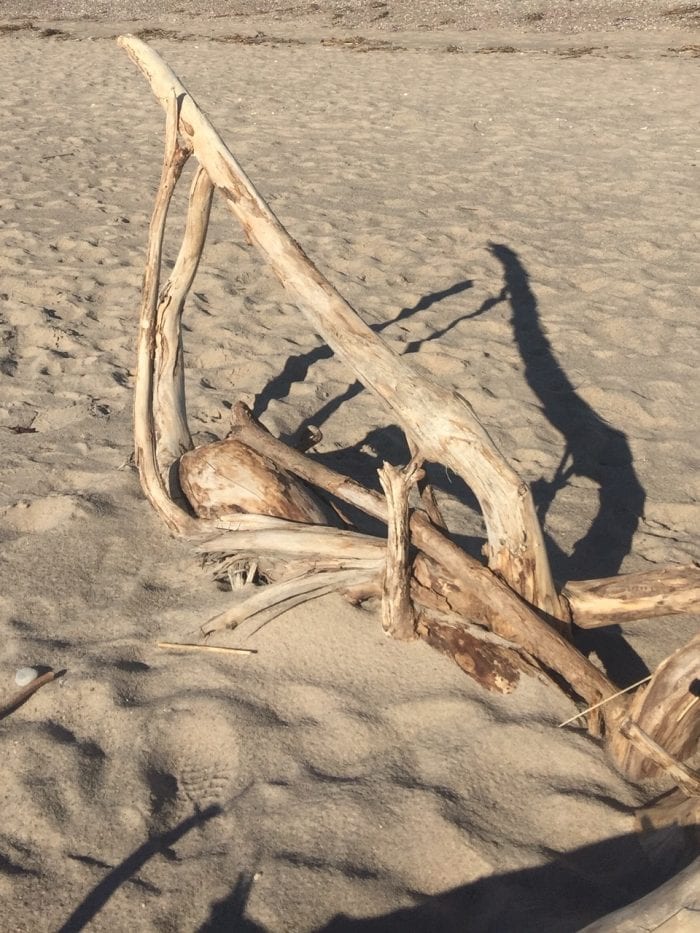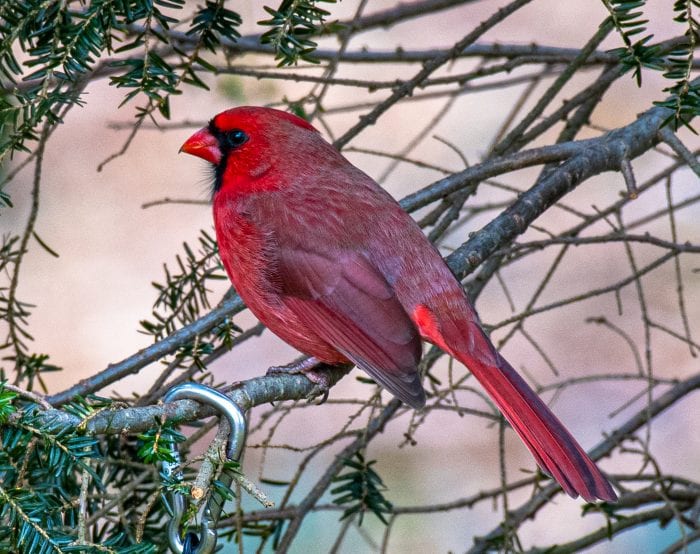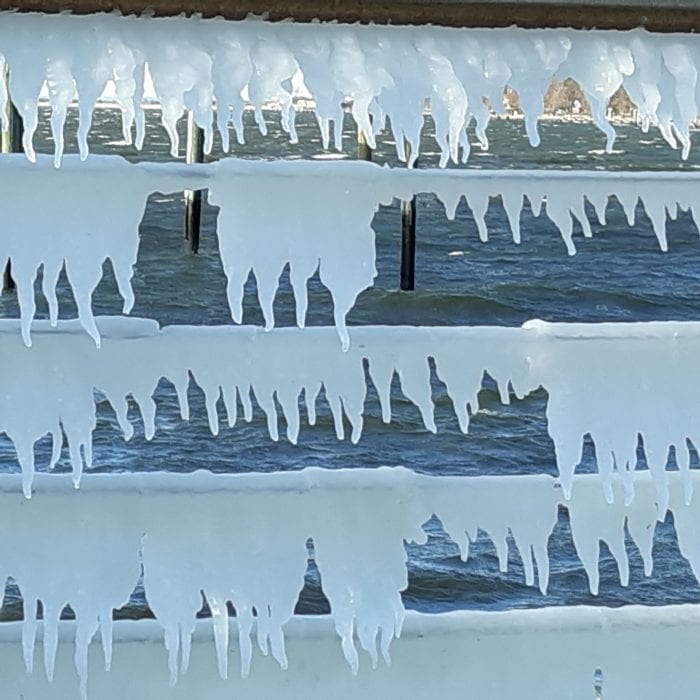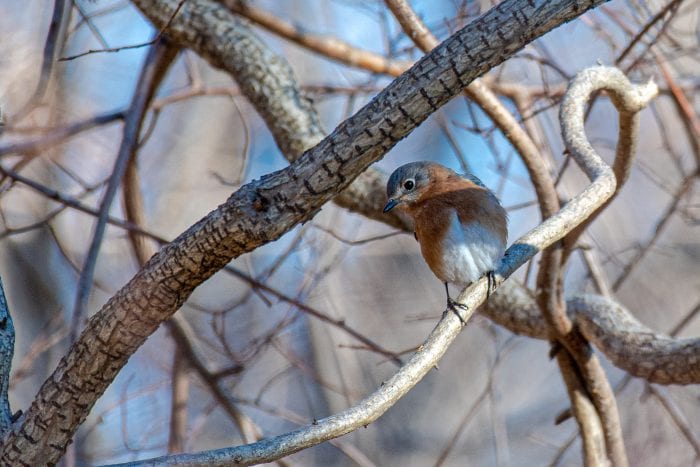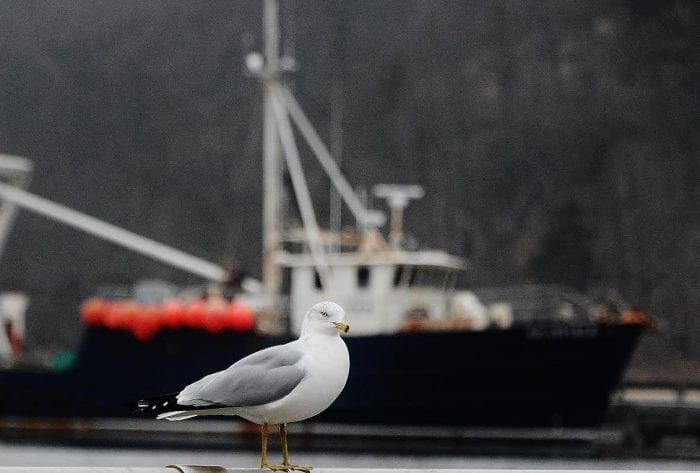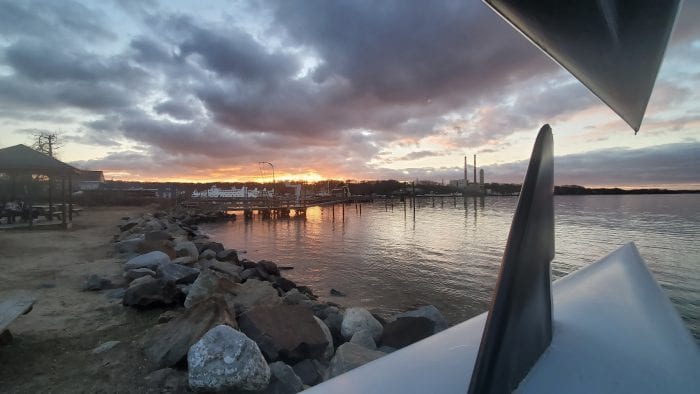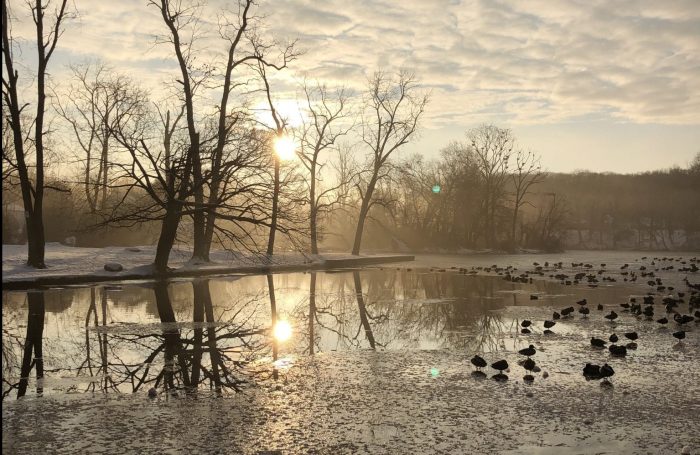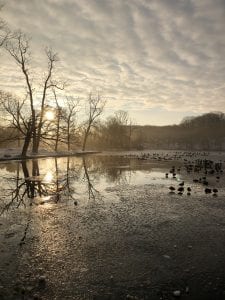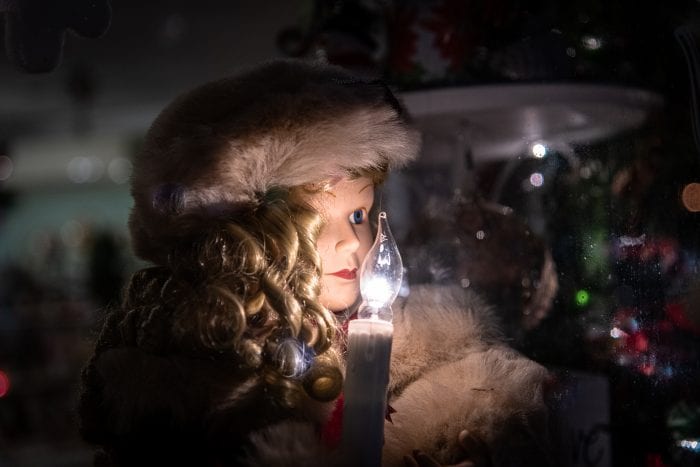BEACH HARP SHADOW
Elisa Hendrey of Sound Beach snapped this photo while taking a walk at Cedar Beach in Mount Sinai on Jan. 12. She writes, ‘I decided to take a closer look at the driftwood that I saw at a distance. When I got up close I realized that the shadow looked to me like a harp so I shot the scene. Interestingly, an Alaskan friend of mine thought it looked like a dog sled. I can now see that, too. It was a rather cool surprise to see such an interesting shadow. I returned another day at a different time and found that the shadow was quite different and did not seem worth photographing, so I guess timing IS everything.’

